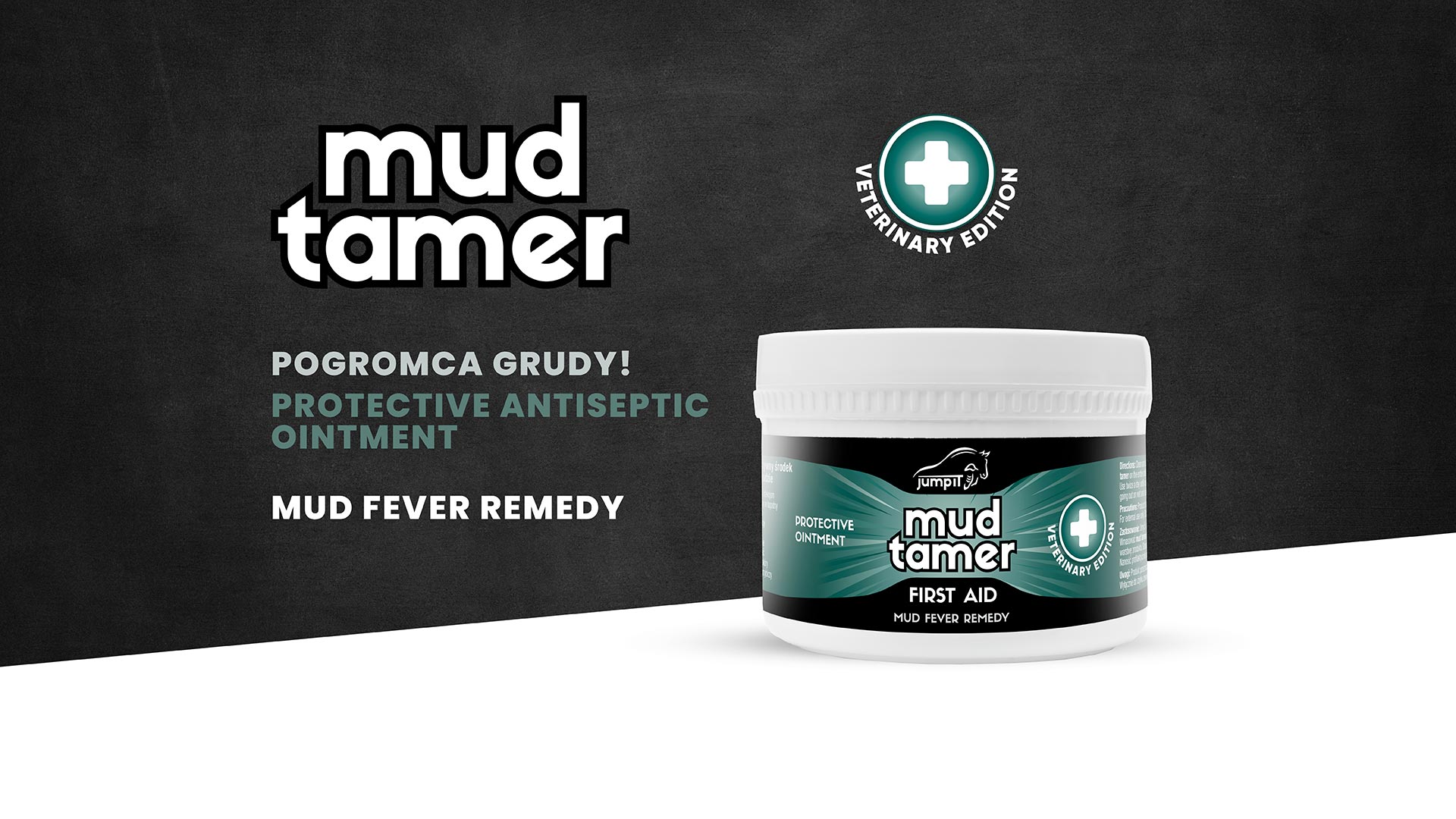

mud tamer`s formulation is designed to provide a full spectrum of protection against microorganisms, focusing its action primarily on gram-positive bacteria Dermatophilus congolensis, which are the most common cause of mud fever formation in horses. The active ingredients were selected in terms of the mechanism of their action on microorganisms, in appropriate concentrations, so that they complement each other, ensure 100% effectiveness in the fight against mud fever and support the regeneration and healing of infected areas.
 |
This product DOES NOT CONTAIN substances approved by the FEI (Fédération Equestre Internationale) for doping substances indicated in the 'Equine Prohibited Substances List' (EPSL) |
TEA TREE OIL
It is known primarily for its excellent antiseptic properties. It contains phenolic compounds and terpenes that have antimicrobial activity against bacteria (including some antibiotic-resistant ones), fungi and viruses.
The mechanism of the antibacterial and antifungal action is based on the destabilization and destruction of the cell membrane, as well as the ability to inhibit the synthesis of nucleic acids and some microbial proteins.
In addition to the antiseptic effect, tea tree oil also has strong anti-inflammatory properties and accelerates the healing of wounds caused by the development of pathogens.
THYMOL
Thymol is a valuable organic compound found naturally in many natural essential oils. Like tea tree oil, it has antiseptic properties through the mechanism of damaging the cell membrane and leading to the lysis of pathogens.
In addition, thymol has the ability to inhibit enzymes from the dehydrogenase group (necessary for cellular respiration), reduce the level of ATP and inhibit the production of biofilm by pathogens, thus preventing their functioning.
8-HYDROXYCHINOLINE SULPHATE
It is a quinoline derivative showing a number of beneficial properties, the most important in the case of mud fever is antiseptic activity against both gram-positive and gram-negative bacteria.
This ingredient is also great for yeasts, molds and viruses, it also has anti-inflammatory and anti-cancer properties, and is an excellent antioxidant.
PERUVIAN BALM
An indispensable substance with great potential in the treatment of skin diseases.
Its antibacterial and anti-inflammatory properties are appreciated for the significant effectiveness of decontamination combined with the simultaneous regeneration of damaged tissues.
Peruvian balm, by stimulating blood microcirculation, affects the natural processes of skin renewal by increasing the production of collagen and elastin.
CALENDULA AND ALOE VERA EXTRACT
The combination of plant extracts of aloe vera and calendula officinalis brings immediate relief from pain, burning, irritation and tension to the skin, reducing its redness and swelling. Sesquiterpenes and flavonoids present in calendula extract and enzymes (bradykinase), sterols (cholesterol, campesterol, β-sisosterol and lupeol) and quinones (aloin, emodin) derived from aloe vera extract, show the ability to inhibit the enzymes COX1 and COX2 responsible for the production of mediators of the inflammatory reaction and also provide analgesic, antibacterial and antiviral properties.
D-PANTHENOL
The addition of a natural precursor of vitamin B5 (pantothenic acid), which is involved in the division and growth of cells, supports wound healing, accelerates hair growth and provides skin elasticity.
ZINC
As zinc oxide, it has astringent, drying, antiseptic and anti-inflammatory properties. It is especially recommended for the care of irritated skin due to its ability to accelerate wound healing and create a protective layer.
LAVENDER OIL
Lavender oil, rich in anthocyanins, tannins and essential oil components, exhibits a broad spectrum of antibacterial and antifungal properties.
It protects damaged skin against infections and harmful external factors, and accelerates the healing of wounds, burns and insect bites.
The ability of lavender oil to stimulate cell division, and thus the formation of new hair bulbs and increase their growth rate, has also been demonstrated in scientific studies
BEES WAX
Bees wax consists of a mixture of organic acids, esters, hydroxy acids, monohydric and dihydroxy alcohols and hydrocarbons. Due to the content of the above-mentioned ingredients, beeswax has a moisturizing effect
on the skin and protects it against water loss, creates an occlusive layer on the skin, thus preventing drying and destruction of the epidermis.
EFFECTIVE CONFIRMED BY RESEARCH
The first step in treating a mud fever is to soften the affected area and remove any scabs. mud tamer as a product that comprehensively solves the problem of lumps and clods, has been tested for softening the epidermis.
The tests were carried out in in-vitro study on a skin model by applying the mud tamer formulation and then testing the reduction of cellular cohesion of the outer layers of the stratum corneum. This parameter was tested with the method of gluing of special disks to the surface of the skin model, with appropriate pressure. After their removal, the number of detached scales stuck to the discs was measured.

mud tamer releases its active substances from the beginning of the therapy, which reduce inflammation and remove the cause of the mud tamer - Dermatophilus congolensis bacteria. This ability was confirmed in an efficacy study against gram-positive bacteria (Staphylococcus family). The determination was made using the disc diffusion method.



 www.facebook.com/jumpitpl
www.facebook.com/jumpitpl
 instagram.com/jumpit_together
instagram.com/jumpit_together